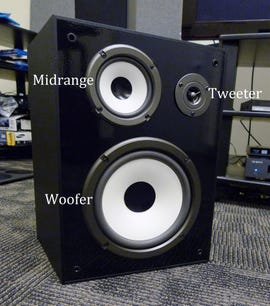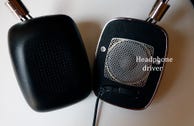
Steve Guttenberg/CNET
Speakers and headphones have drivers. They’re the vibrating parts that create the sound you hear.
Some speakers have three types of drivers — a tweeter for high frequencies, a midrange for middle tones like voice, and a woofer for bass — but most speakers have just a tweeter and a combination midrange-woofer.

 Enlarge Image
Enlarge ImageThis headphone’s driver is behind a perforated metal grill.
Steve Guttenberg/CNET
Dynamic drivers are by far the most common type of driver for speakers and headphones; dynamic drivers are dome- or cone-shaped devices. Some high-end speakers and headphones have perfectly flat round, square or rectangular thin-film planar magnetic or electrostatic drivers. In any case, all drivers make sound by moving air.

 Enlarge Image
Enlarge ImageJerry Harvey Audio JH-13 has 6 balanced-armature drivers
Steve Guttenberg/CNET
Almost all full-size headphones have just one driver per earpiece, but some high-end in-ear headphones have more. For example, the Jerry Harvey Roxanne headphone has a total of 12 drivers per ear piece (four bass, four midrange, four tweeters).
High-end in-ear headphones like Roxanne use “balanced armature” drivers, which are much smaller than other types of headphone drivers, so the designers can squeeze more drivers into each earpiece.
Speakers and headphones with more than one driver are referred to as “two-way” or “three-way” designs and use crossover networks to route the corresponding frequencies to the woofer(s), midrange(s) and tweeter(s) drivers.
A speaker or headphone with a midrange-woofer and a tweeter is always a two-way design; even when the speaker or headphone has two or three or more combination midrange-woofer drivers and a single tweeter, it’s still a two-way design. Only when the speaker or headphone has separate bass, midrange and tweeter drivers is it classified as a three-way design.
Post your questions about speaker and headphone drivers in the comments section.



